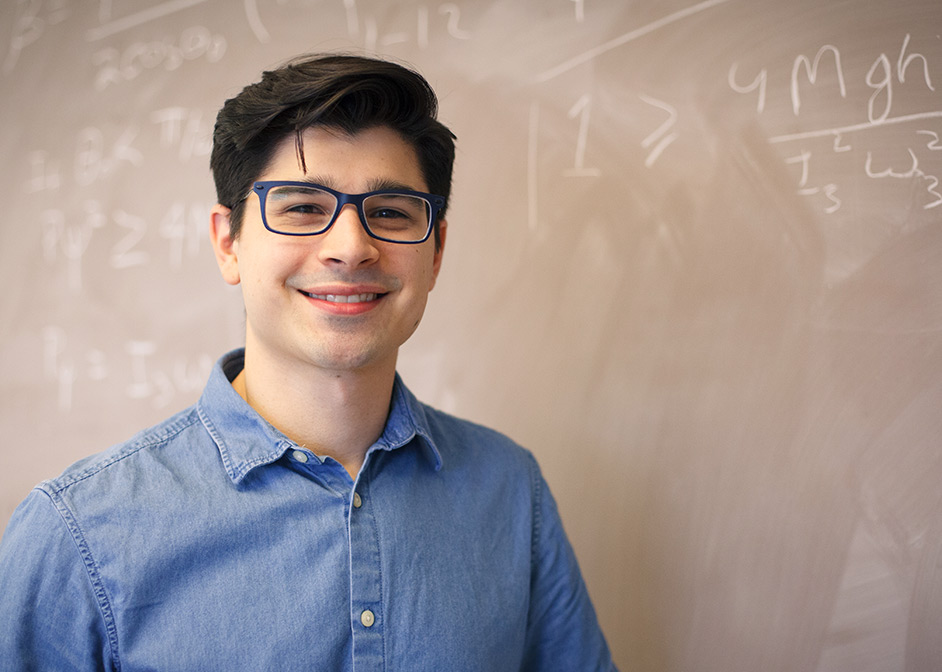Protein Dynamics: How Crowding Affects Functionality
Physics’ Andrei Gasic Modeling Protein Dynamics in Cellular Environment
For Andrei Gasic, a University of Houston Ph.D. student in physics, his skills are put to use answering the question of how protein function depends on environment. His research, which is conducted under the guidance of Margaret Cheung, professor of physics in the College of Natural Sciences and Mathematics, blends his interest in biomedical research with his training as a physicist.
How Environment Affects Function
“We are trying to understand how the cell’s environment affects a protein’s function,” Gasic said.

Proteins can be thought of as the machines that keep a cell running, tasked with carrying out all of the different duties, from maintaining a cell’s structure, to driving all the reactions needed to maintain functionality. Within a cell, there are millions of proteins, jostling and buzzing and interacting with each other, a packed environment that works together.
Most function studies focus on understanding the individual behavior of a protein in an idealized environment, one that is removed from the packed conditions of a cell.
The Effect of Crowding
“Specifically, I am trying to understand how crowding affects function,” Gasic said.
How much a crowded environment affects how a protein works is still an open question. This change in functionality can be compared to the way a person walks in an open area, versus how this same person walks when at a packed concert venue. Having the space to freely move around, versus needing to navigate a tightly packed environment, is a factor that affects functionality.
To answer this question, Gasic is modeling protein networks in order to predict how factors such as concentration or protein packing shape play a role. What he’s found is that crowded environments have an effect on a protein’s efficiency.
“For proteins to function, they usually have to pass an energy barrier,” Gasic said.
An energy barrier is the amount of energy needed for a protein to carry out a reaction.
“In crowded environments, it appears proteins can switch between states without needing
to cross this barrier,” Gasic said.
If this barrier is lowered, then less energy is required for a reaction, which speeds up the rate.
Opportunities in Houston
Gasic was drawn to Houston because of its opportunities, specifically its culture of biomedical research. He is a current recipient of a National Institutes of Health predoctoral training fellowship from the Houston Area Molecular Biophysics Program (HAMBP), which is a collaborative graduate program with biophysics faculty from six major universities in Houston.
“Everyone should do some research, no matter their background,” Gasic said. “It’s an important skill to have.”
- Rachel Fairbank, College of Natural Sciences and Mathematics
May 15, 2018